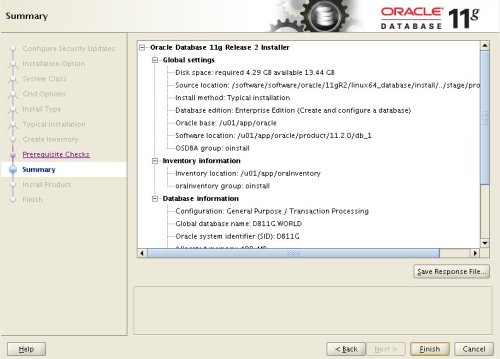With the new VM highlighted, click the 'Start' button on the toolbar. On the 'Select start-updisk' screen, choose the relevant Oracle Linux ISO image and click the 'Start' button. The resulting console window will contain the Oracle Linux boot screen. Continue through the Oracle Linux 6 installation as you would for a basic server. Install Linux OS to deploy enterprise applications faster. Systems, Oracle Linux is a proven operating system that is available in the cloud, on premises, or as.
Oracle 11g for Linux x86 has been released and available for download from official web site: Oracle Database 11g extends Oracle’s unique ability to deliver the benefits of grid computing with more self-management and automation, making it easier to innovate faster with confidence using Real. Oracle Linux is free to download, use and distribute and is provided in a variety of installation and deployment methods. Installation media (ISO images) for Oracle Linux (and Oracle VM) are freely available from the Oracle Software Delivery Cloud. Oracle Enterprise Linux is an enterprise-class Linux distribution supported by Oracle. According to. Are you having a problem downloading Linux from LQ ISO? Oracle RAC 12c Database on Linux Using VirtualBox By Sergei Romanenko October, 2013. 44 GB of free space on the hard disk + staging area for Oracle Linux and RAC downloads, about 9 GB. We will use Oracle Linux 6.4 ISO image downloaded earlier. Place the.iso file into the virtual DVD. Oracle Database 11g Release 2 (11.2.0.1.0) for Linux x86-64. Download, linux.x64_11gR2_database_1of2.zip (1,239,269,270 bytes) (cksum - ).
8i | 9i | 10g | 11g | 12c | 13c | 18c | 19c | Misc | PL/SQL | SQL | RAC | WebLogic | Linux
Home » Articles » 10g » Here
In this article I'll describe the installation of Oracle Database 10g Release 2 (10.2.0.1) on Red Hat Enterprise Linux 5 (RHEL5). The article is based on a server installation similar to this, with a minimum of 2G swap, secure Linux disabled and the following package groups installed.
- GNOME Desktop Environment
- Editors
- Graphical Internet
- Text-based Internet
- Development Libraries
- Development Tools
- Legacy Software Development
- Server Configuration Tools
- Administration Tools
- Base
- Legacy Software Support
- System Tools
- X Window System
Alternative installations may require more packages to be loaded, in addition to the ones listed below.
Download Software
Download the following software.
Unpack Files
Unzip the files.
You should now have a single directory containing installation files. Depending on the age of the download this may either be named 'db/Disk1' or 'database'.
Download Oracle Linux Iso Image
Hosts File
The '/etc/hosts' file must contain a fully qualified name for the server.
For example.
Set Kernel Parameters
Add the following lines to the '/etc/sysctl.conf' file.
Free Linux Iso Download Mirrors
Run the following command to change the current kernel parameters.
Add the following lines to the '/etc/security/limits.conf' file.
Add the following line to the '/etc/pam.d/login' file, if it does not already exist.
Disable secure linux by editing the '/etc/selinux/config' file, making sure the SELINUX flag is set as follows.
Alternatively, this alteration can be done using the GUI tool (System > Administration > Security Level and Firewall). Click on the SELinux tab and disable the feature.
Setup
Install the following packages.
Create the new groups and users.
Create the directories in which the Oracle software will be installed.
Login as root and issue the following command.
Edit the '/etc/redhat-release' file replacing the current release information (Red Hat Enterprise Linux Server release 5 (Tikanga)) with the following:
Login as the oracle user and add the following lines at the end of the '.bash_profile' file.
Installation
Log into the oracle user. If you are using X emulation then set the DISPLAY environmental variable.
Start the Oracle Universal Installer (OUI) by issuing the following command in the database directory.
During the installation enter the appropriate ORACLE_HOME and name then continue installation. For a more detailed look at the installation process, click on the links below to see screen shots of each stage.
Post Installation

Edit the '/etc/redhat-release' file restoring the original release information.
Edit the '/etc/oratab' file setting the restart flag for each instance to 'Y'.
For more information see:
Hope this helps. Regards Tim...